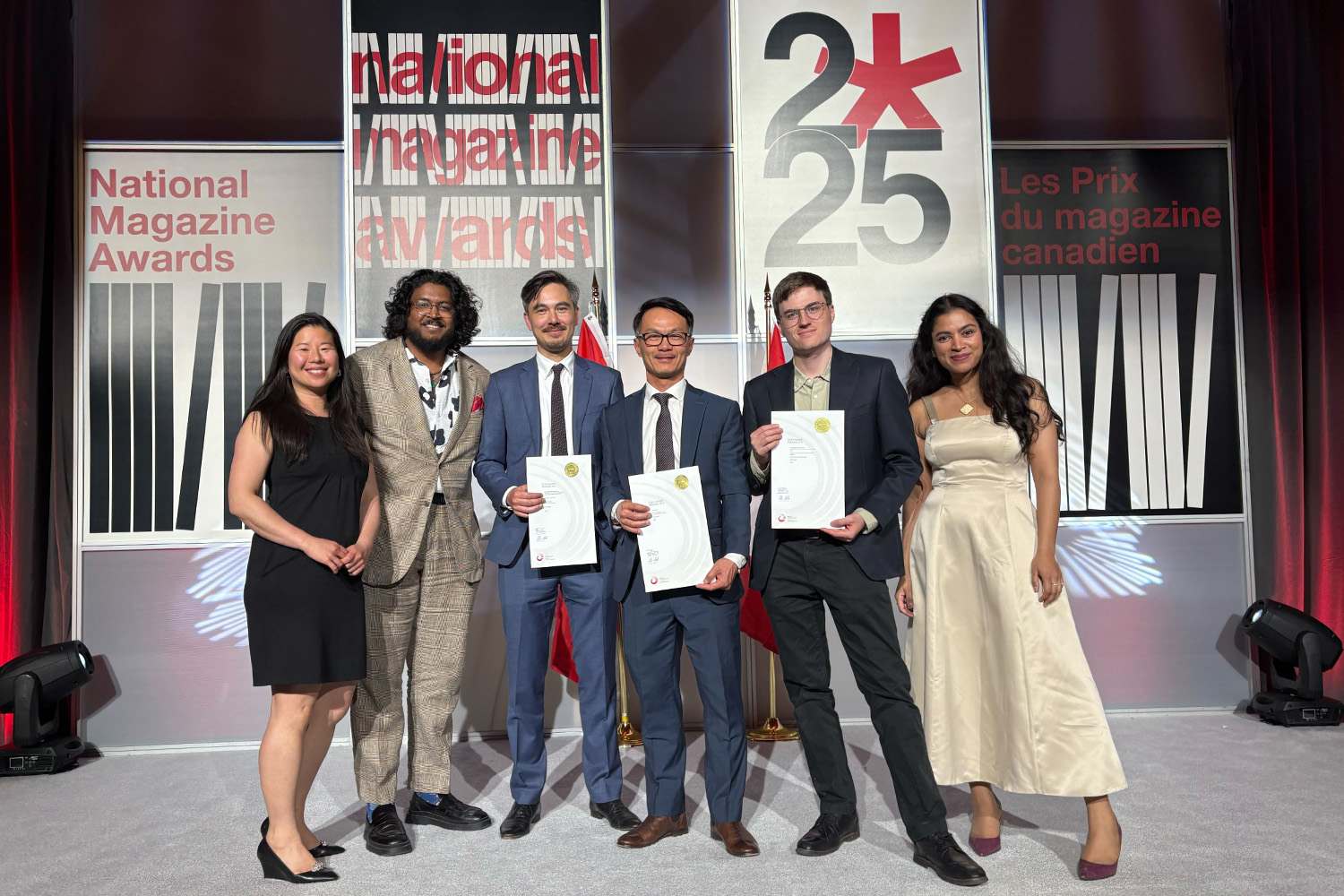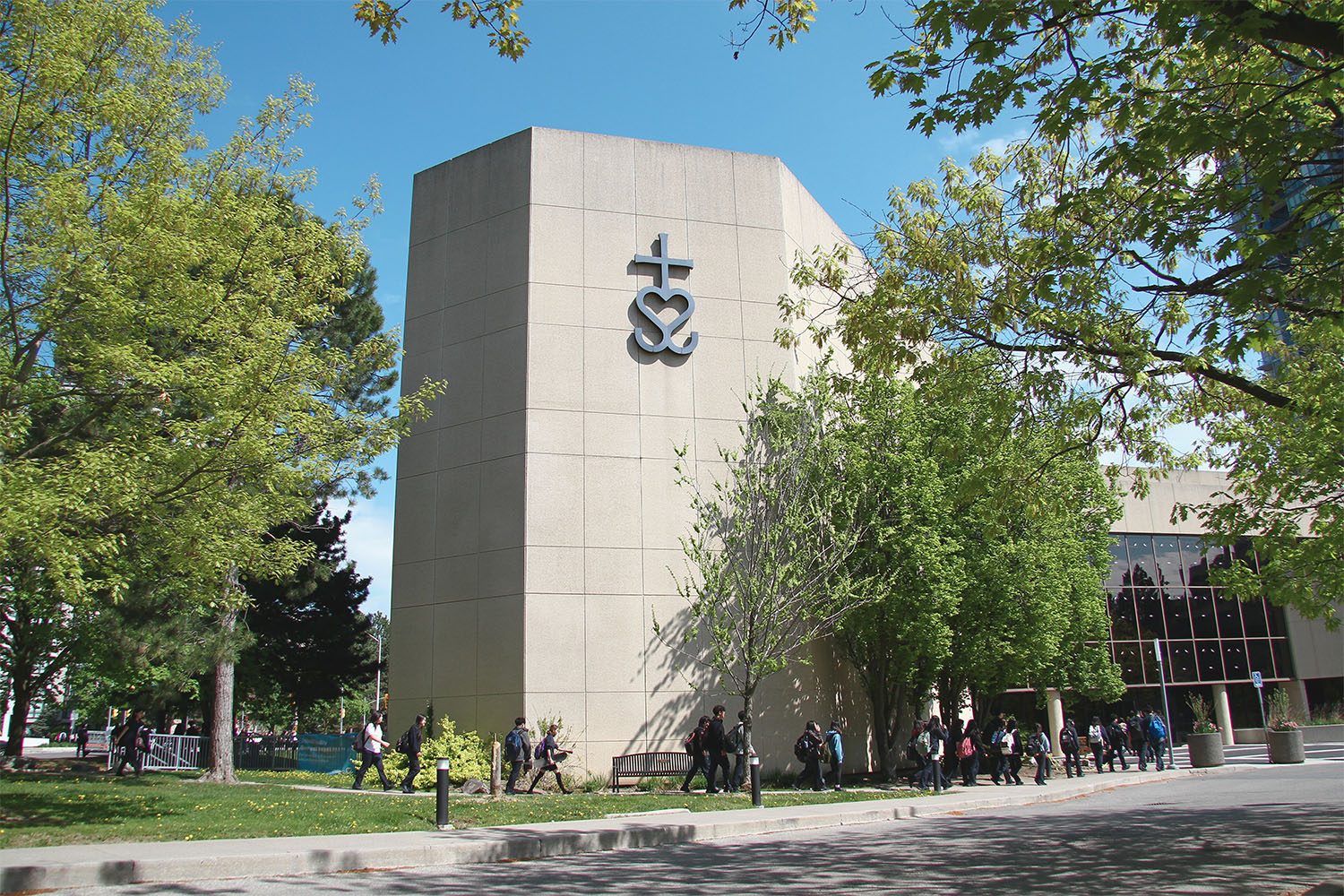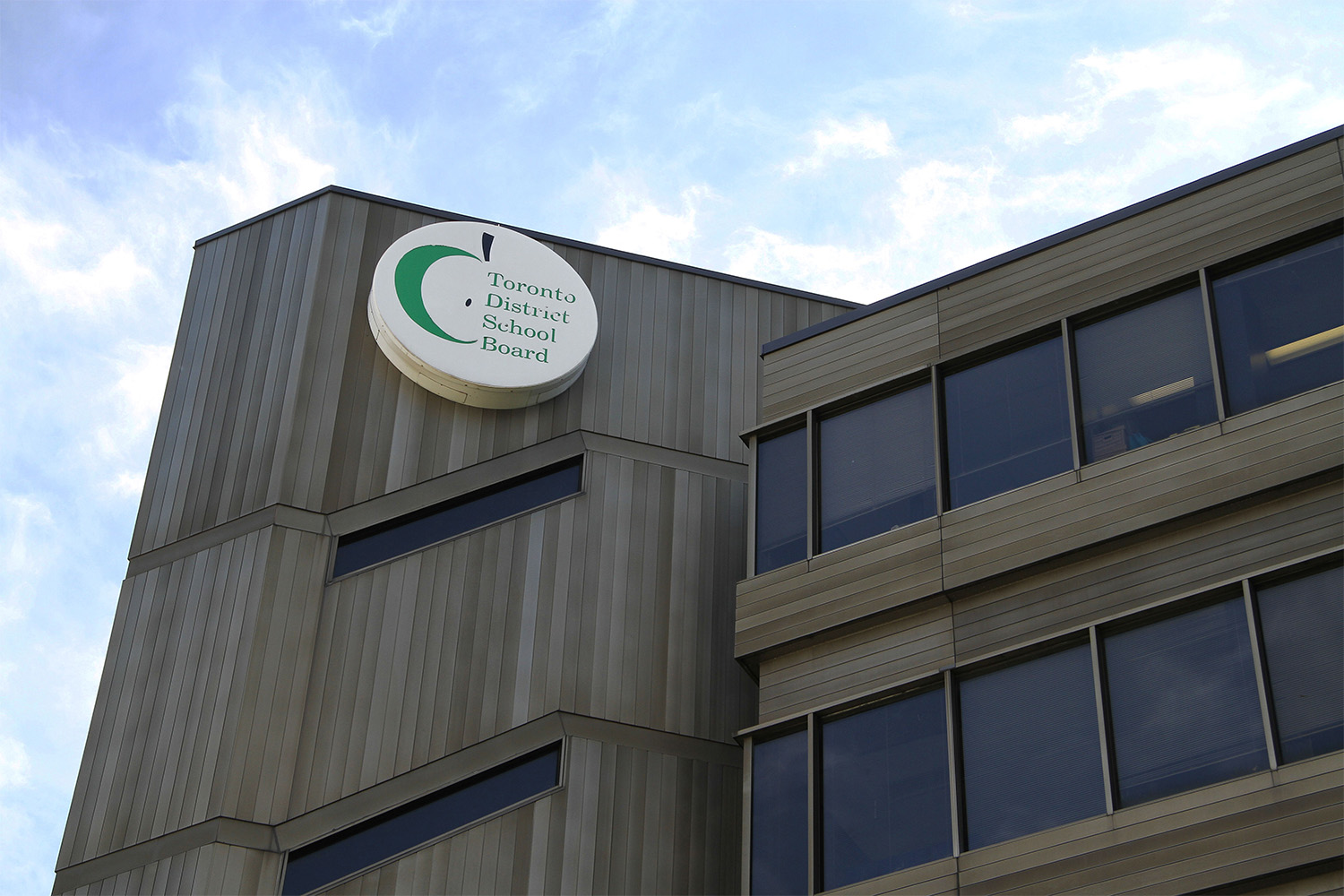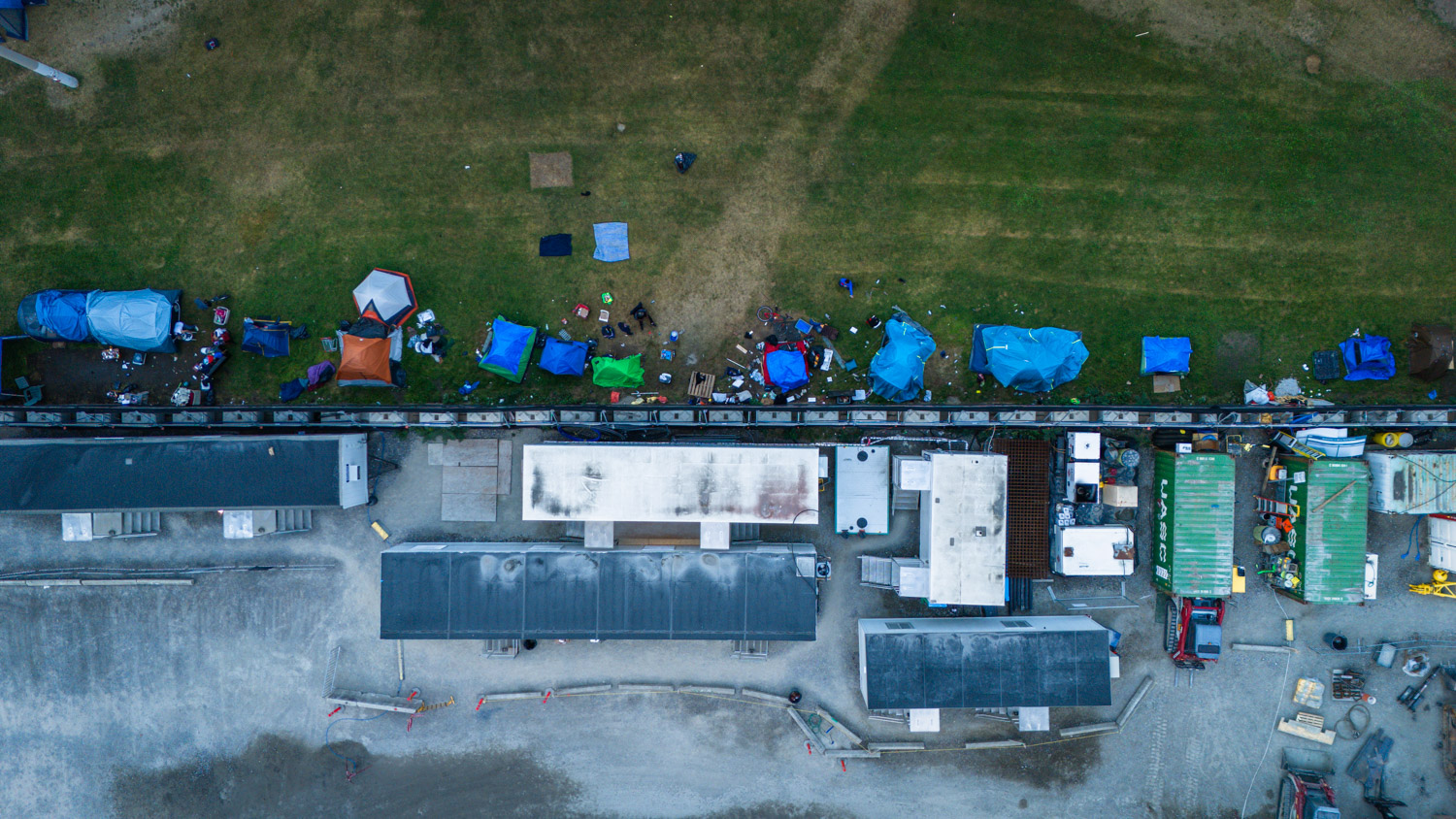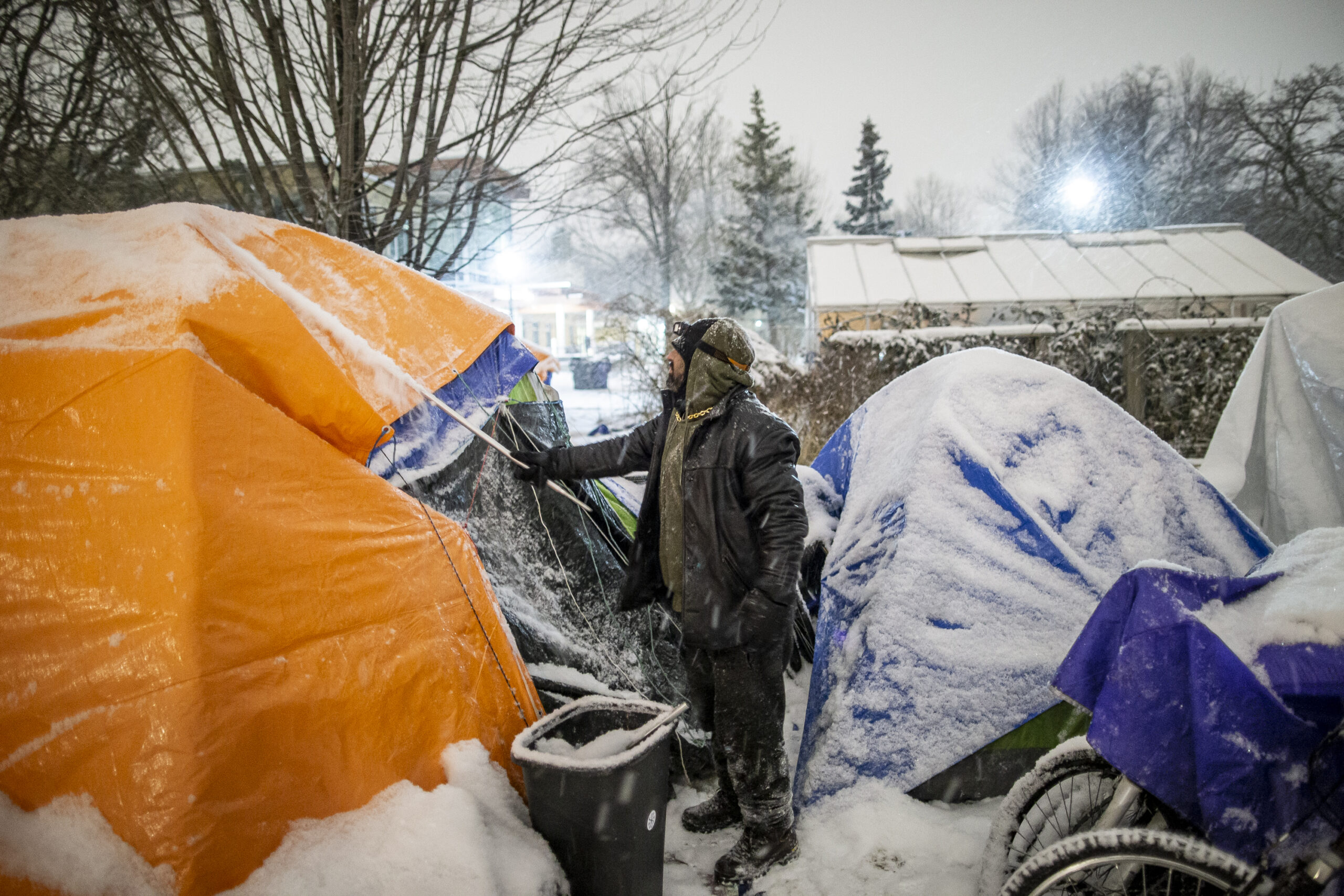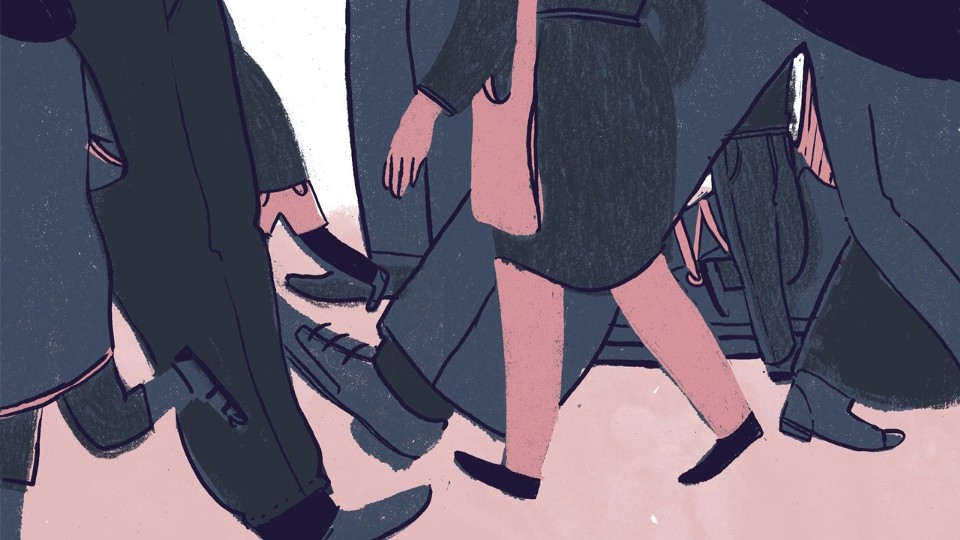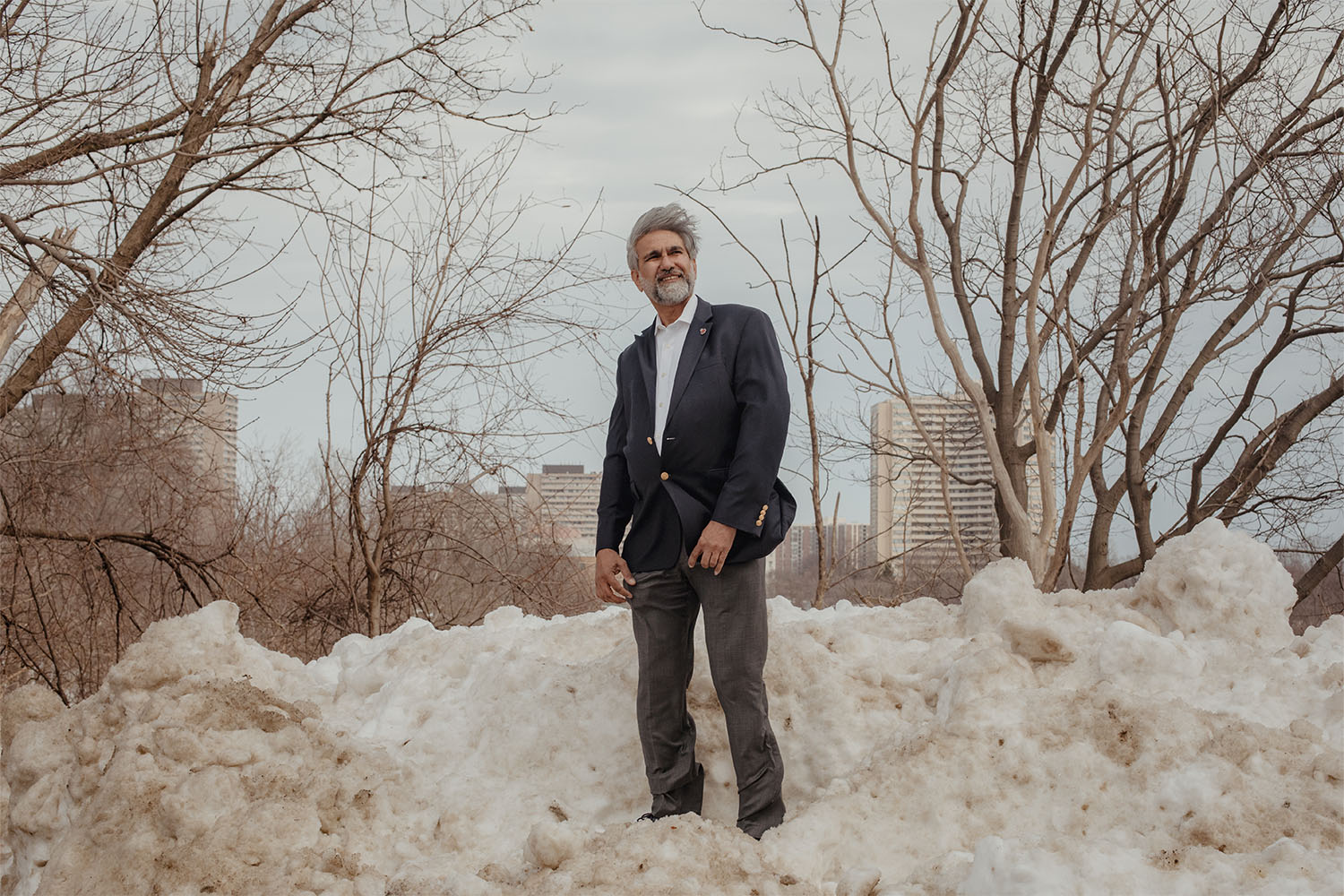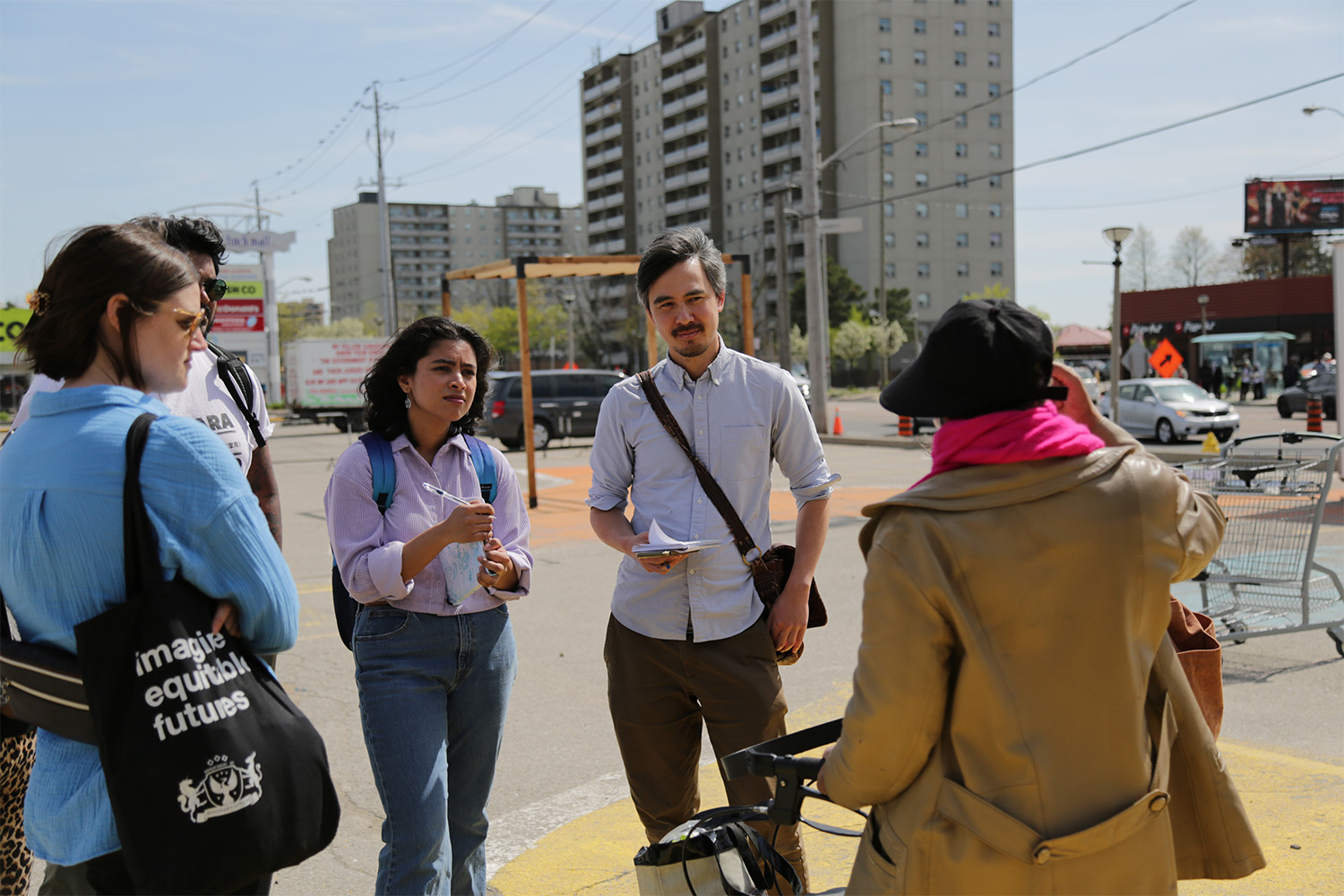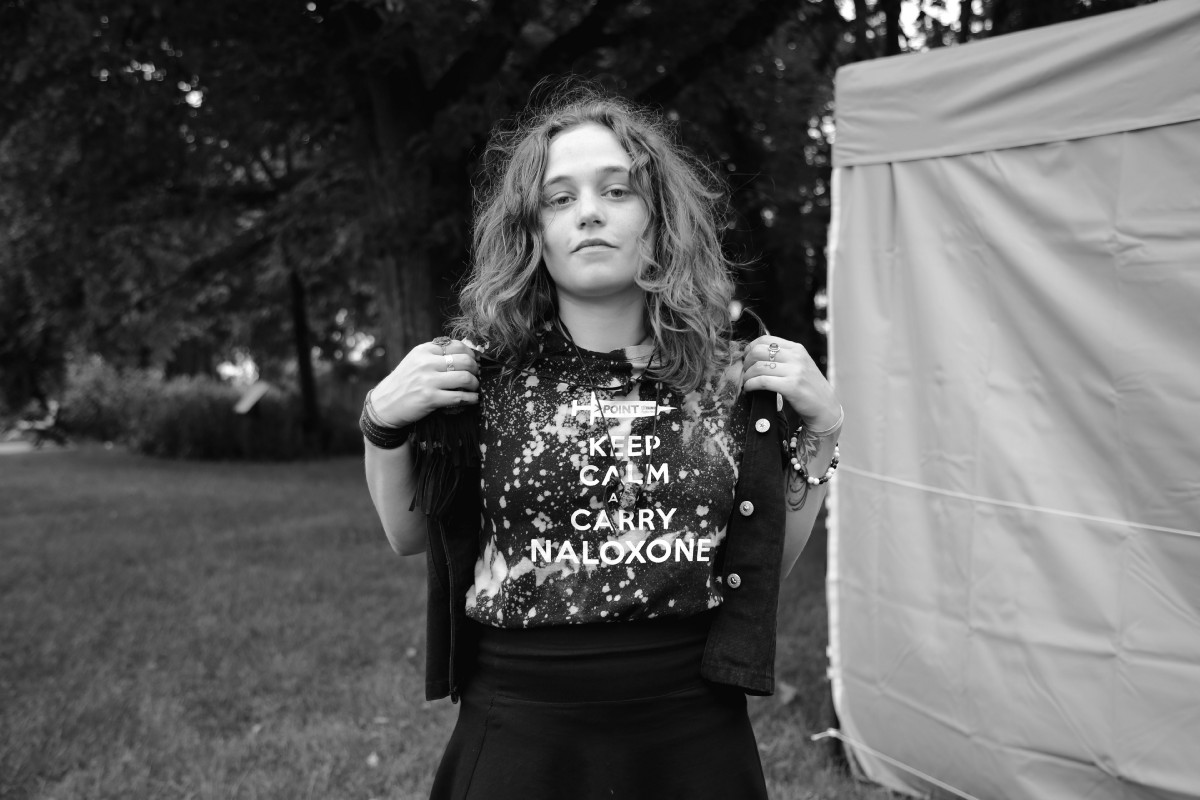
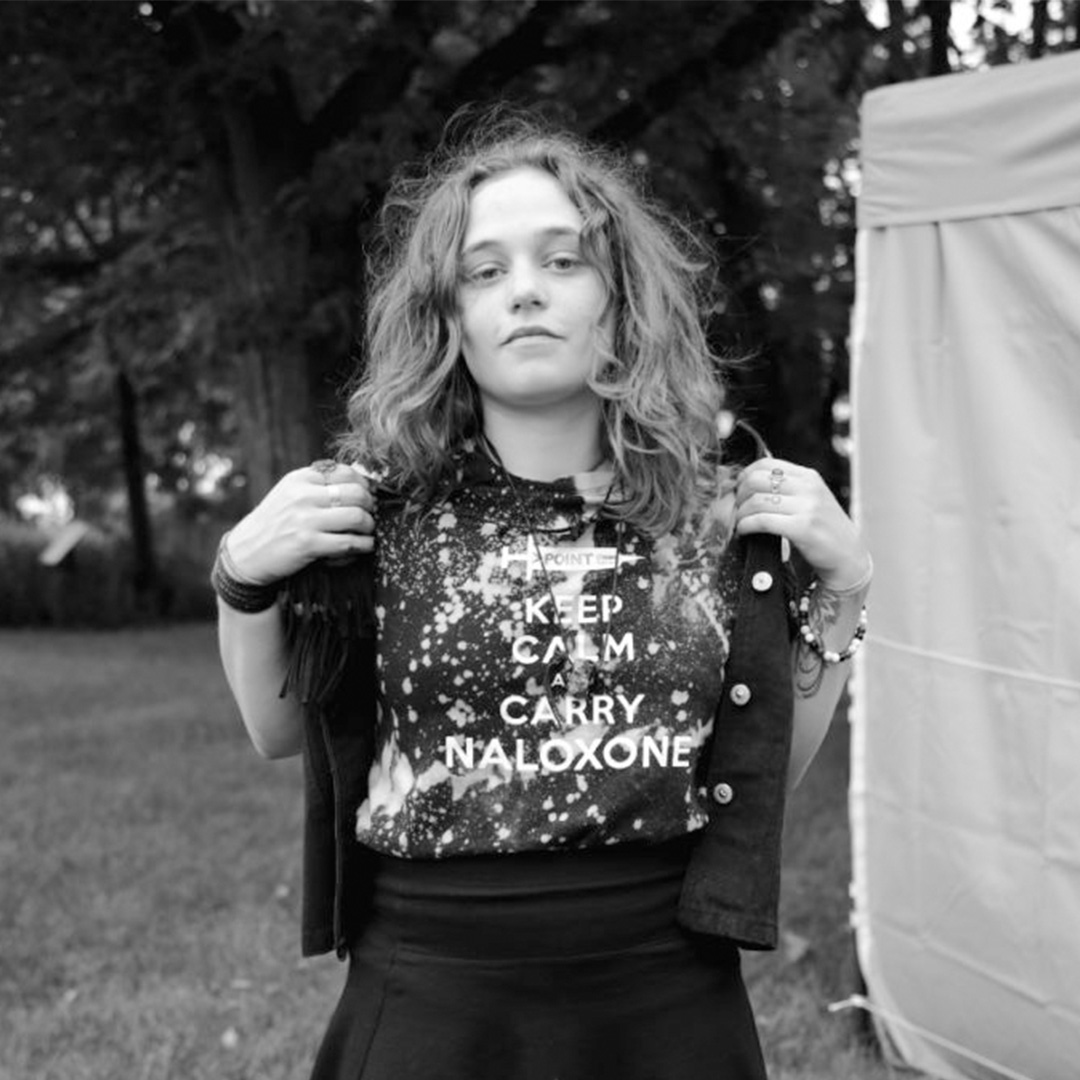
At first, it looked like an outdoor wedding. Or maybe one of those granola bar companies was trying to give out free samples, thought Katy Klein. A couple of party tents had suddenly sprung up across the street from Klein’s apartment in Parkdale one August afternoon. By six in the evening, a caravan of news reporters had descended on Beaty Boulevard Park, a narrow patch of green space between King Street and the train tracks. Although many of them didn’t yet know it, Klein and the other residents of Parkdale had a new neighbour — the city’s latest overdose prevention site.

As Klein looked on, across the street Olympia Trypis, Christine Zinni, and other volunteers from the Toronto Overdose Prevention Society buzzed about their pop-up tents, putting up signs and laying out medical supplies for the unsanctioned site. Others like Zoë Dodd readily took questions from the press about their latest act of defiance.


The scene had the feel of a 1960s antiwar rally or civil rights sit-in. Just days earlier, the Ford government had halted the opening of a previously-approved overdose prevention site at the nearby community health centre. Despite strong scientific evidence showing that these sites save lives, the government said it was conducting a review to determine if they “have merit.” Around the same time, Toronto police issued a safety alert that seven people had died from overdoses in and around Parkdale over a 12-day span. Part protest, part countermeasure, the event was tailor-made for the six o’clock evening news.
But for many involved in the effort, the circumstances that led them to Parkdale were more complex, long-standing and deeply personal than what was captured on broadcasts and Twitter feeds.
Zoë and the Fight

I first met Zoë Dodd on a cold December night last winter during my visit to the city’s first overdose prevention site which, at the time, operated out of a trailer in Moss Park. A passionate harm reduction worker with a fiery activist demeanour, Dodd famously went toe-to-toe with Prime Minister Justin Trudeau over what she felt was federal inaction on the overdose crisis.
A lot has happened since my initial encounter with her that winter night. The Moss Park trailer is now gone, having morphed into a fully-sanctioned, indoor site just around the corner at 134 Sherbourne Street. In fact, there are now eight legitimate safe consumption and overdose prevention sites operating in Toronto, and Parkdale was supposed to be the ninth. They all owe their existence to that initial act of civil disobedience by Dodd and company last August, when they decided to encamp themselves in Moss Park and, in the process, help push the city to take that first step into the unknown. But the new era of harm reduction they helped usher in might be nothing more than a fleeting moment as many now fear that not just Parkdale, but all existing overdose prevention sites are in jeopardy when their six-month permits are up for renewal. And so here they are, back where they started a year earlier. Different park, same fight.

For Dodd, that fight — for safe injection services — is rooted in the larger fight against the growing socio-economic divisions that are pushing vulnerable segments of the population to the brink of existence.
“We live in a time of austerity,” she says. “And for many of us that’s all people have ever known. It’s hard to pay your rent. It’s hard to survive. It’s hard to find housing. It’s hard to get paid well. It’s hard to find employment.” The disproportionate effect of the overdose crisis on the poor is very real. A recent study by the Ontario Drug Policy Research Network, for example, found that 39 percent of Ontario women who died of opioid-related overdoses came from the poorest 20 percent of the population.
Things get dramatically bleaker when you factor in historical traumas, such as residential schools, childhood sexual abuse and child welfare systems. “Many of the people that use the site in Moss Park are Indigenous,” says Dodd. “That is a part of the story that isn’t being told and is missing, and those are the stories that we do need to talk about.”
Between 1876 and 1996, close to 150,000 Indigenous children were forcibly removed from their families and culture and placed in residential schools. There, deplorable conditions created through physical, sexual, and emotional abuse, as well as institutionalized neglect led to what scholars and historians have described as “cultural genocide.” The Truth and Reconciliation Commission of Canada estimated that at its peak in the 1940s, residential school students were 5 times more likely to die than Canadian school-aged children in the general population. A recent study found that Indigenous youth who use drugs today are 13 times more likely to die compared to other Canadians of the same age. The study says that intergenerational and lifetime traumas may prompt harmful stress coping responses, including injection drug use and self harm. Researchers were so appalled by what they had found that in their conclusion they said that the deaths “must be viewed as a public health and human rights issue.”
The way Dodd sees it, to deny people the right to safe spaces to use and non-paternalistic ways to get help is to carry on with historical injustices. Drug use is but one part of a complicated bigger picture. “It’s not just pharma, it’s not just prescribing. It is about social inequality and the political and social structures that impact people’s lives.”
Peter vs. the Medical Model
“This is unsanctioned, but we’re sanctioning it,” says Peter Leslie with the kind of sagacity that’s made him an intellectual force within Toronto’s harm reduction community.
Leslie has an impressive CV:
- Co-founder, Toronto Harm Reduction Alliance
- Co-founder, Toronto Harm Reduction Workers Union
- Former board member, Queen West Community Health Centre
- Former member, Toronto Drug Strategy Implementation Panel
But there’s a couple of bullet points he’s not afraid to also add. “I’m a former paramedic as well, and I’m a drug user,” says Leslie. His career as a Toronto paramedic unravelled after nearly 20 years. Drugs and alcohol took over his life, and eventually rendered him homeless and unemployable.
Sites like the one in Parkdale have unfortunately become caught in an ideological tug of war between two distinct, but not necessarily mutually exclusive, ways to deal with addiction. The first, which Leslie refers to as “the medical model” is treatment-based, with the main goal of trying to get people off drugs and achieving abstinence. The second is harm reduction, which says that people might be unable or unwilling to stop using drugs for various reasons, and keeping them safe should be the main goal.
Leslie has lived through both. After years of being in and out of treatment with no success, he’s now comfortable with the fact that drug use is part of his life. Treatment works for some people, but not for him. Instead of pouring all of his energy into what is to him the unreachable goal of abstinence, Leslie has channelled that energy towards being a productive member of his community and, in the process, has picked up the pieces of his life. Take a listen.
Christine Gives a Tour
Christine Zinni is a former drug user who has been working in harm reduction for four years now. She’s had more than her fair share of friends and acquaintances die from a drug overdose — over thirty and counting.
“Right now with the drug supply being toxic, you never know what you’re going to get,” she warns. Drug dealers are cutting fentanyl — a synthetic opioid 50 times more potent than heroin — into all kinds of street drugs to give them a bigger kick and because it’s a cheaper. A drug checking program in Vancouver recently tested 907 street samples that were being sold as heroin, and found that only 18 percent contained heroin, while 91 percent tested positive for fentanyl.
Zinni and others within the harm reduction community often cite century-old drug laws for stigmatizing people who use drugs, and for giving rise to an out of control illegal drug market that’s fueled the overdose crisis. At sites like the one in Parkdale, they try to combat both of these problems under one roof. Here is Zinni giving a quick tour of the site’s inner workings.
The Neighbours’ Business
With the municipal elections just a couple months away, the stakes are high for local politicians when it comes to responding to safe consumption or overdose prevention sites in their backyard. Apart from any personal views they may have, councillors of wards that are home to these sites are faced with competing voices from their constituency. Lucy Troisi, the councillor for Moss Park, recently went public against the site. “There’s a lot of violence, disorder, drug dealing and drug dealers, and kids are afraid to walk to their local park, people are afraid to walk on Sundays through their neighbourhood or to invite friends and families over for a Saturday barbeque,” said Troisi in a Toronto Star article.
Needless to say, not everyone shares her view. “I think the drug use is already going on in the communities, in many ways and in many places,” says Seth Clarke, a Parkdale resident. Clarke comes at this from a position of experience, having worked with prisons to create needle exchange programs to prevent the spread of infections among inmates with HIV/AIDS. He says that sites like the one in Parkdale can actually be healthy for the community. “People can dispose of their equipment at the site, so you’re less likely to find injection equipment in alleys and places like that.”
As for Katy Klein — the neighbour who initially mistook the pop-up tents for an outdoor wedding — she admits that she knows very little about how safe consumption sites work. But she hopes that the Parkdale site can prove its merit and be allowed to set up somewhere more permanent.

